

University of Texas
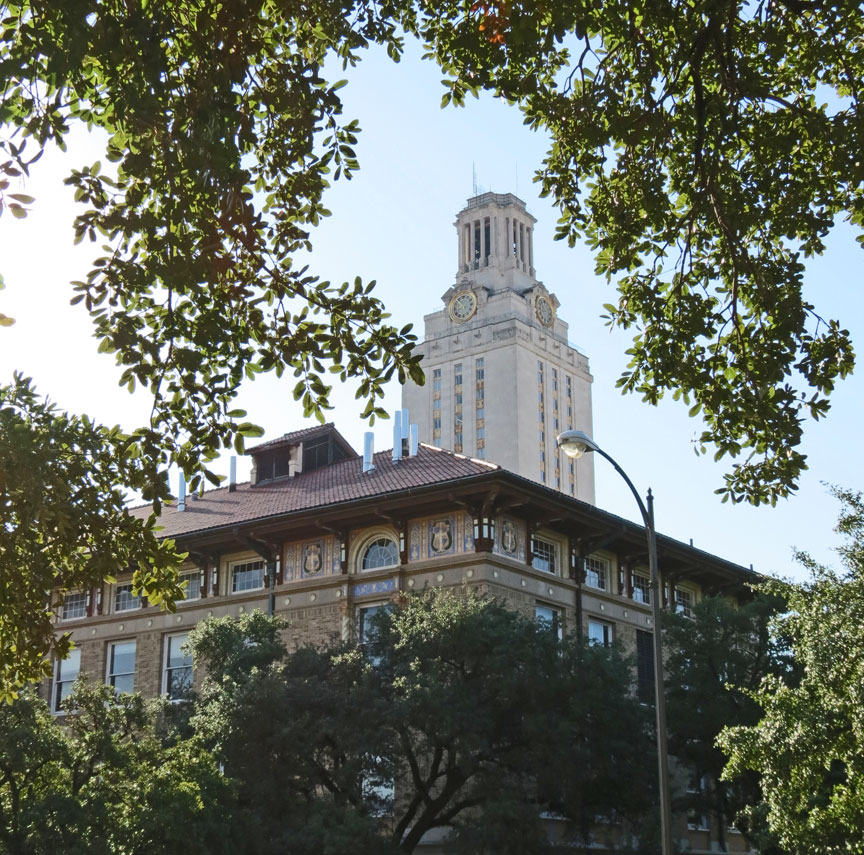
University of Texas at Austin
The University of Texas at Austin (informally University of Texas, UT Austin or UT) is a state research university, and is the flagship institution of the University of Texas System. Founded in 1883, its campus is approximately 0.25 miles (400 m) from the Texas State Capitol in Austin. The institution has the fifth-largest single-campus enrollment in the nation as of fall 2010 (and had the largest enrollment in the country from 1997 to 2003), with over 50,000 undergraduate and graduate students and over 24,000 faculty and staff. It currently holds the second largest enrollment in Texas behind Texas A&M University.
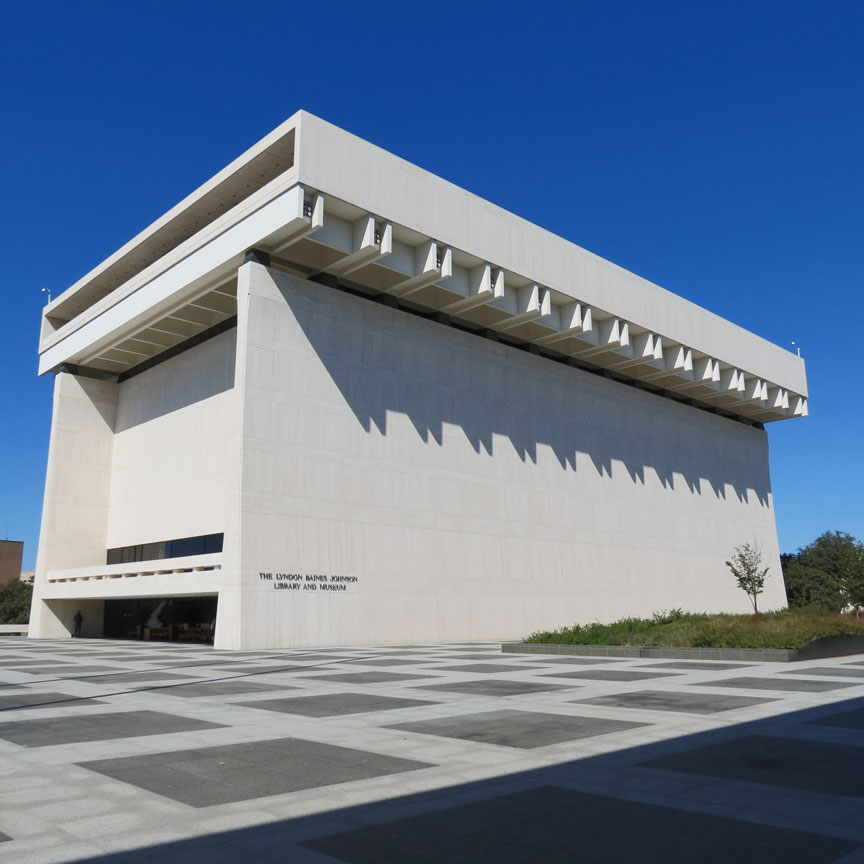
Lyndon Baines Johnson Library and Museum
The University of Texas at Austin was named one of the original eight Public Ivy institutions and was inducted into the American Association of Universities in 1929. The university is a major center for academic research, with research expenditures exceeding $640 million for the 2009–2010 school year. The university houses seven museums and seventeen libraries, including the Lyndon Baines Johnson Library and Museum and the Blanton Museum of Art, and operates various auxiliary research facilities, such as the J. J. Pickle Research Campus and the McDonald Observatory. Among university faculty are recipients of the Nobel Prize, Pulitzer Prize, the Wolf Prize, and the National Medal of Science, as well as many other awards.
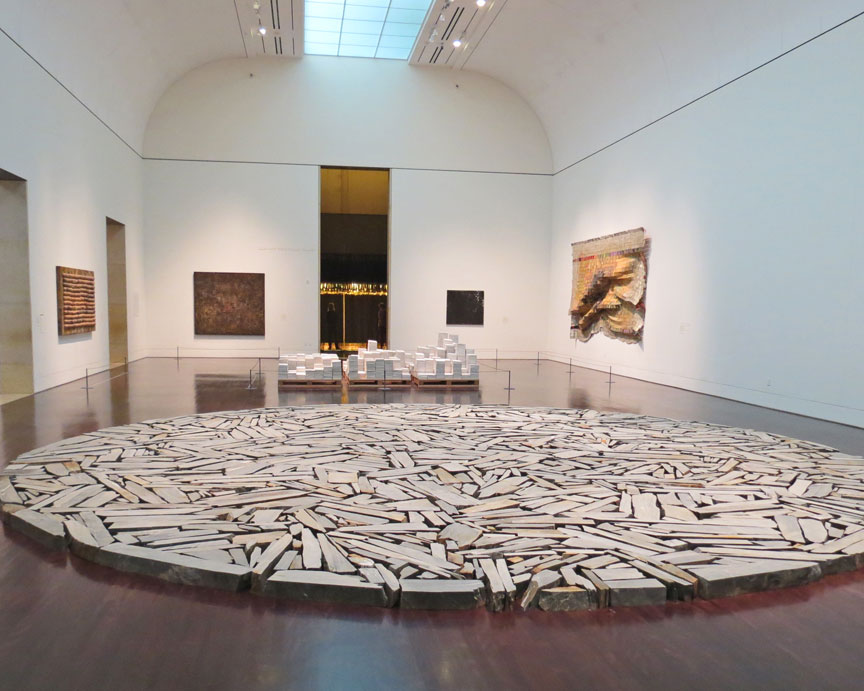
UT Austin student athletes compete as the Texas Longhorns and are members of the Big 12 Conference. The university has won four NCAA Division I National Football Championships, and has claimed more titles in men's and women's sports than any other school in the Big 12 since the league was founded in 1996.[18] Current and former UT Austin athletes have won 117 Olympic medals, including 14 in Beijing in 2008. The university was recognized by Sports Illustrated as "America's Best Sports College" in 2002.
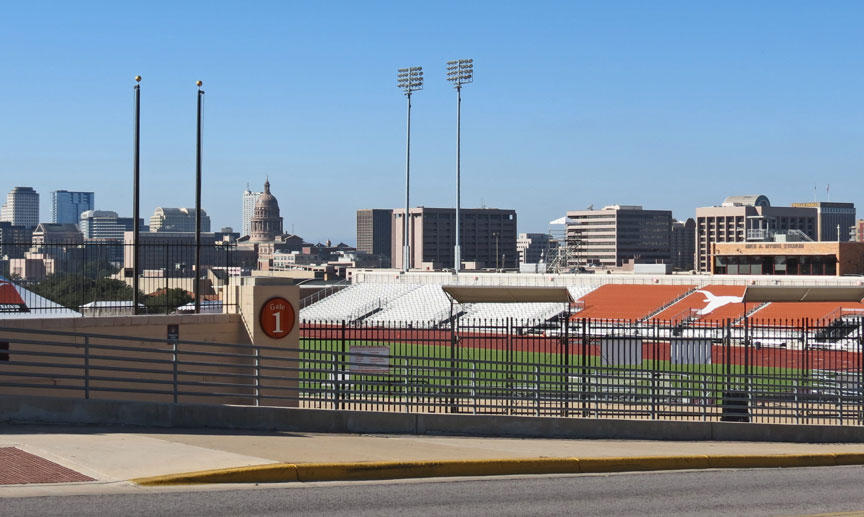
Track and Soccer stadium
The first mention of a public university in Texas can be traced to the 1827 constitution for the Mexican state of Coahuila y Tejas. Although an article promised to establish public education in the arts and sciences, no action was taken by the Mexican government. But after Texas obtained its independence from Mexico in 1836, the Congress of Texas adopted the Constitution of the Republic, which included a provision to establish public education in the republic, including two universities or colleges. On January 26, 1839, the Congress of Texas agreed to eventually set aside fifty leagues of land towards the effort; in addition, 40 acres (160,000 m2) in the new capital of Austin were reserved and designated "College Hill."

In 1845, Texas was annexed into the United States of America. The state
legislature passed the Act of 1858, which set aside $100,000 in United States
bonds towards construction of a university. In addition, the legislature
designated land, previously reserved for the encouragement of railroad
construction, toward the universities' fifty leagues. But Texas's secession from
the Union and the American Civil War prevented further action on these plans.

After the war, the 1862 Morrill Act facilitated the creation of what is now
Texas A&M University, which was established in 1876 as the Agricultural &
Mechanical College of Texas. The Texas Constitution of 1876 mandated that the
state establish a university "at an early day," calling for the creation of a
"university of the first class," styled "The University of Texas." It revoked
the endowment of the railroad lands of the Act of 1858 but appropriated
1,000,000 acres (4,000 km2) in West Texas. In 1883, another two million were
granted, with income from the sale of land and grazing rights going to The
University of Texas and Texas A&M.
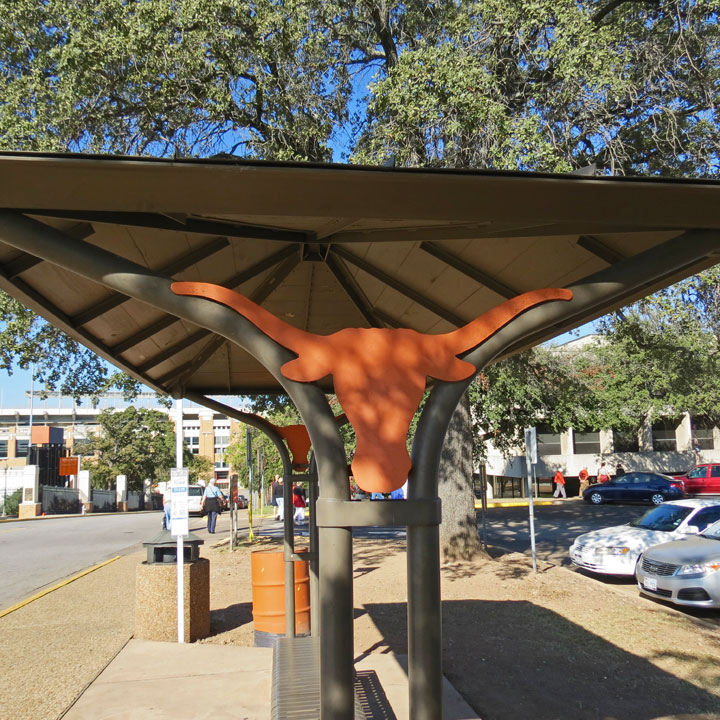
Longhorn sport symbol
In 1881, Austin was chosen as the site of the main university, and Galveston was designated the location of the medical department. On the original "College Hill," an official ceremony began construction on what is now referred to as the old Main Building in late 1882. The university opened its doors on September 15, 1883.
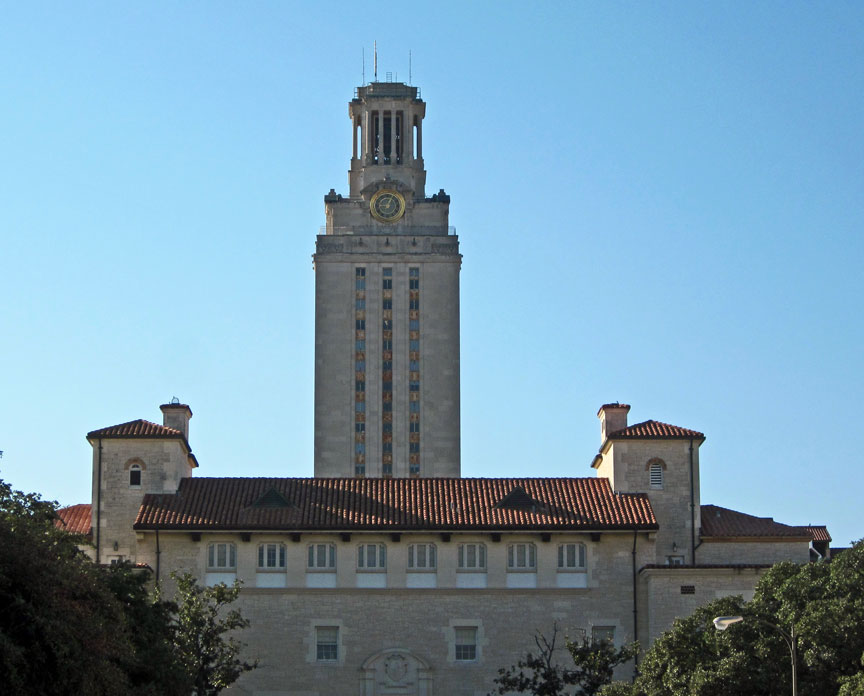
University of Texas Tower
The Tower, completed in 1937, stands 307 ft (94 m) tall and dons different colors of lighting on special occasions.
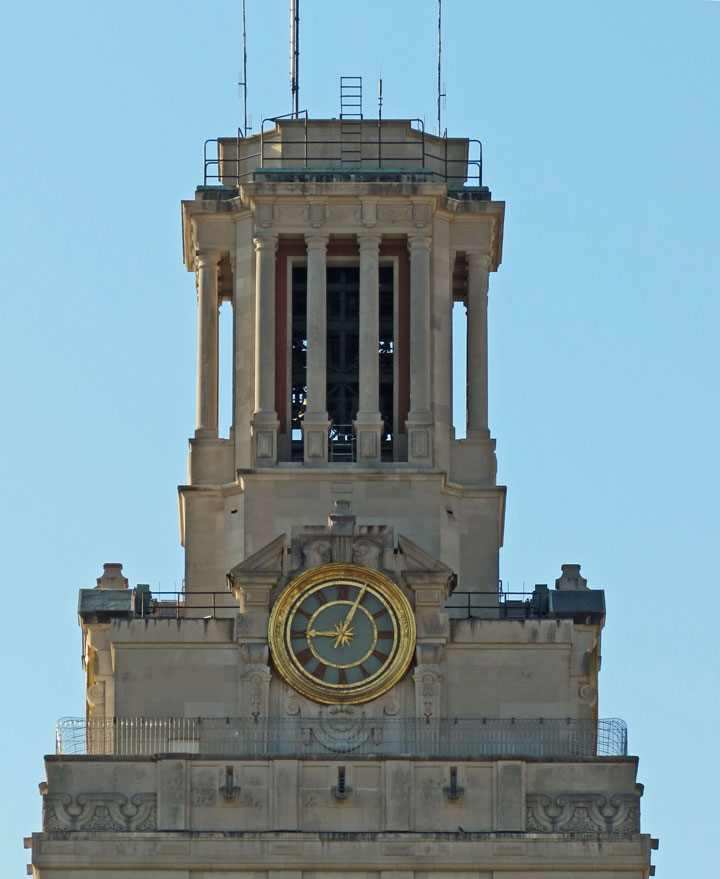
The old Victorian-Gothic Main Building served as the central point of the
campus's 40-acre (160,000 m2) site, and was used for nearly all purposes. But by
the 1930s, discussions arose about the need for new library space, and the Main
Building was razed in 1934 over the objections of many students and faculty. The
modern-day tower and Main Building were constructed in its place.
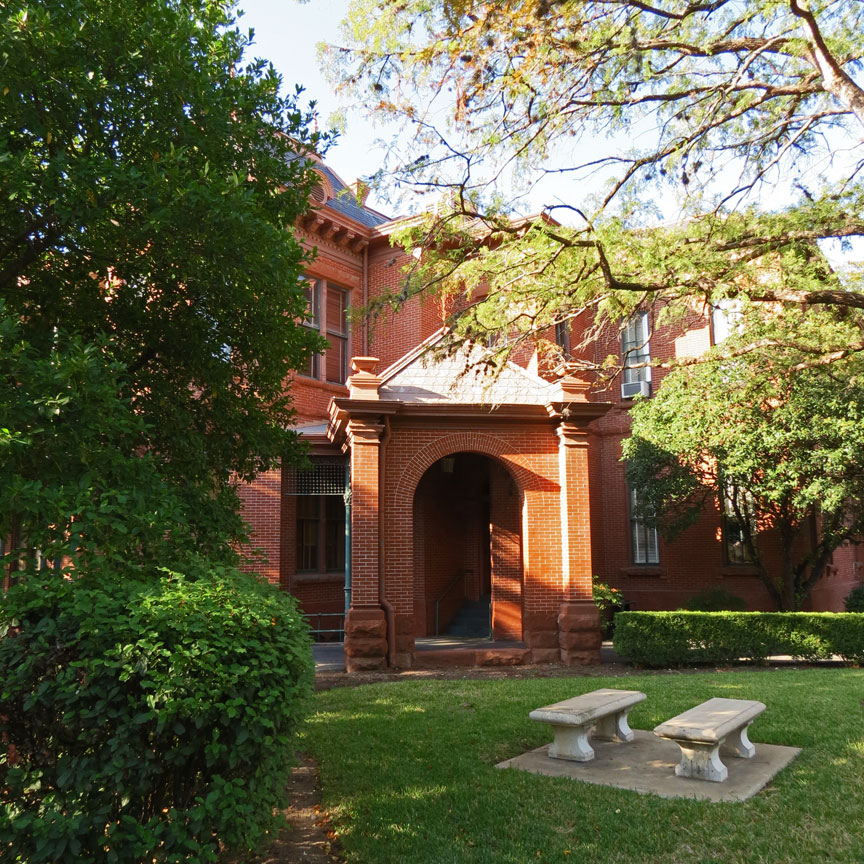
In 1910, George Brackenridge donated 500 acres (2.0 km2) on the Colorado River
to the university . A vote by the regents to move the campus to the donated land
was met with outrage, and the land has only been used for auxiliary purposes
such as graduate student housing. Part of the tract was sold in the late-1990s
for luxury housing, and there are controversial proposals to sell the remainder
of the tract. The Brackenridge Field Laboratory was established on 82 acres
(330,000 m2) of the land in 1967.

As a result of the controversy, in 1921, the legislature appropriated $1,350,000
for the purchase of land adjacent to the main campus. But expansion was hampered
by the constitutional restriction against funding the construction of buildings.
With the discovery of oil on university-owned grounds in 1923, the institution
was able to put its new wealth towards its general endowment fund. These savings
allowed the passing of amendments to make way for bond issues in 1931 and 1947,
with the latter expansion necessary from the spike in enrollment following World
War II. The university built 19 permanent structures between 1950 and 1965, when
it was given the right of eminent domain. With this power, the university
purchased additional properties surrounding the original 40 acres (160,000 m2).

During World War II, the University of Texas was one of 131 colleges and
universities nationally that took part in the V-12 Navy College Training Program
which offered students a path to a Navy commission.

On August 1, 1966, Texas student Charles Whitman barricaded the observation deck
in the tower of the Main Building. With two rifles, a sawed-off shotgun and
various other weapons, he killed 16 people on campus from the observation deck,
below the clocks on the tower and three more in the tower, as well as wounding
two more inside the observation deck. Whitman had been a patient at the
University Health Center, and on March 29, preceding the shootings, had conveyed
to psychiatrist Maurice Heatley his feelings of overwhelming hostilities and
that he was thinking about "going up on the tower with a deer rifle and start
shooting people." Following the Whitman event, the observation deck was
closed until 1968, and then closed again in 1975 following a series of suicide
jumps during the 1970s. In 1999, after installation of security fencing and
other safety precautions, the tower observation deck reopened to the public.

The first presidential library on a university campus was dedicated on May 22,
1971 with former President Johnson, Lady Bird Johnson and then-President Richard
Nixon in attendance. Constructed on the eastern side of the main campus, the
Lyndon Baines Johnson Library and Museum is one of 13 presidential libraries
administered by the National Archives and Records Administration.

The University of Texas has experienced a wave of new construction recently with
several significant buildings. On April 30, 2006, the school opened the
Blanton
Museum of Art. In August 2008, the AT&T Executive Education and Conference
Center opened, with the hotel and conference center forming part of a new
gateway to the university. Also in 2008, Darrell K Royal-Texas Memorial Stadium
was expanded to a seating capacity of 100,119, making it the largest stadium (by
capacity) in the state of Texas.
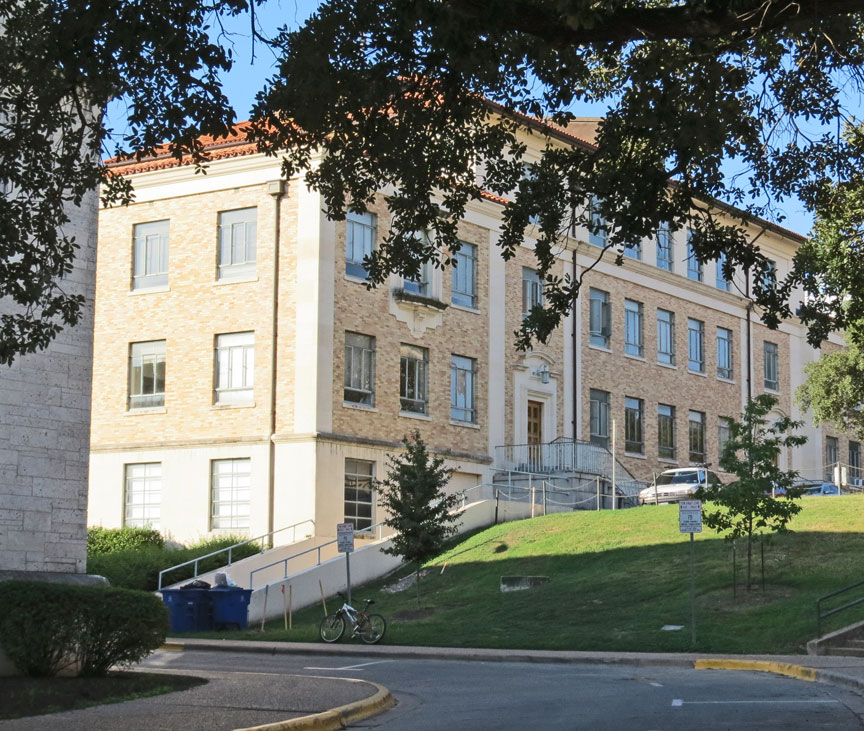
On the morning of September 28, 2010, 19-year-old Colton Tooley opened fire on
campus with an AK-47 semi-automatic rifle, resulting in a lockdown of the
university campus. He then walked into the Perry-Castañeda Library and committed
suicide.

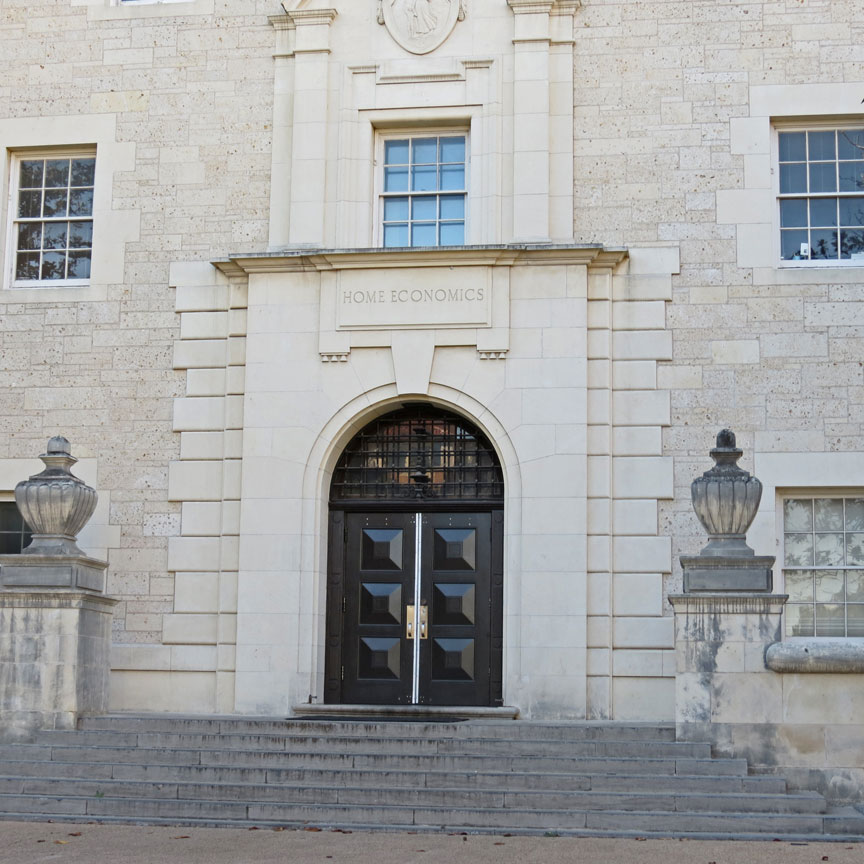
On January 19, 2011, the university announced the creation of a 24-hour
television network in partnership with ESPN, dubbed the Longhorn Network. ESPN
will pay a $300 million guaranteed rights fee over 20 years to the university
and to IMG College, UT Austin's multimedia rights partner. The network covers
the university's intercollegiate athletics, music, cultural arts and academics
programs. The channel first aired in September 2011.

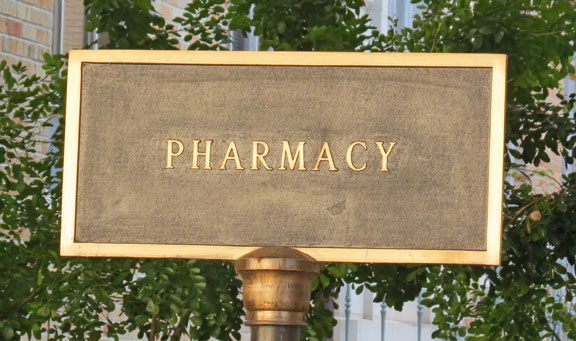
The University's property totals 1,438.5 acres (582.1 ha), comprising the 423.5
acres (171.4 ha) for the Main Campus in central Austin and other the J. J.
Pickle Research Campus in north Austin and the other properties throughout
Texas. The main campus has 150 buildings totalling over 18,000,000 square feet
(1,700,000 m2).


The Littlefield House
One of the University's most visible features is the Beaux-Arts Main Building, including a 307-foot (94 m) tower designed by Paul Philippe Cret. Completed in 1937, the Main Building is in the middle of campus. The tower usually appears illuminated in white light in the evening but is lit orange for various special occasions, including athletic victories and academic accomplishments; it is conversely darkened for solemn occasions. At the top of the tower is a carillon of 56 bells, the largest in Texas. Songs are played on weekdays by student carillonneurs, in addition to the usual pealing of Westminster Quarters every quarter hour between 6 am and 9 pm In 1998, after the installation of security and safety measures, the observation deck reopened to the public indefinitely for weekend tours.

The Littlefield House
The Littlefield House, used today by the university's Office of Resource Development, was constructed in 1893 and is listed in the National Register of Historic Places.
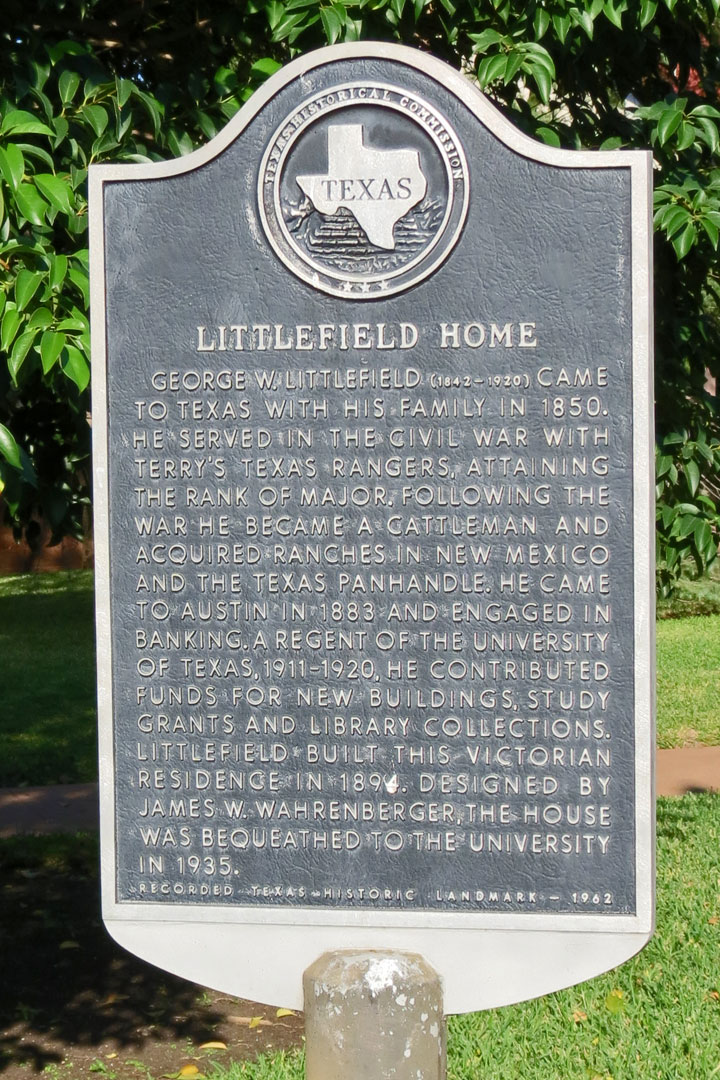
The university's seven museums and seventeen libraries hold over nine million
volumes, making it the seventh-largest academic library in the country. The
holdings of the university's Harry Ransom Humanities Research Center include one
of only 21 remaining complete copies of the Gutenberg Bible and the first
permanent photograph, View from the Window at Le Gras, taken by Nicéphore
Niépce. The newest museum, the 155,000-square-foot (14,400 m2) Blanton Museum of
Art, is the largest university art museum in the United States and hosts
approximately 17,000 works from Europe, the United States, and Latin America.
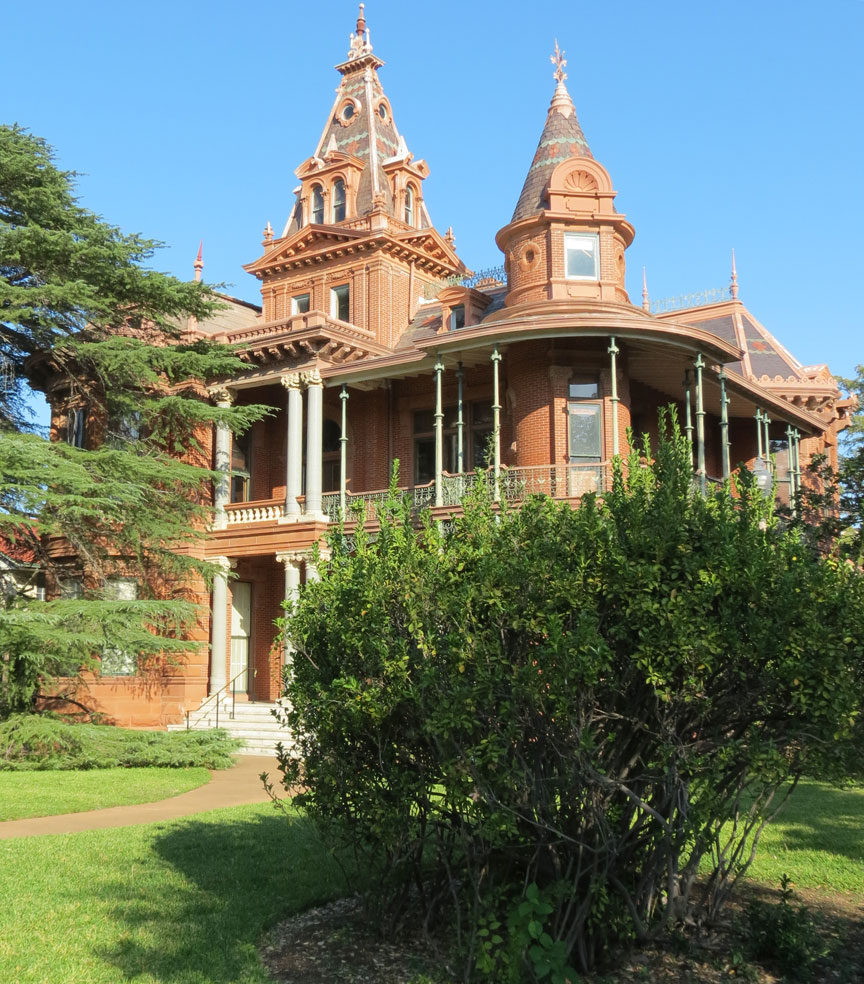
The University of Texas has an extensive underground tunnel system that links
all of the buildings on campus. Constructed in the 1930s under the supervision
of creator Carl Eckhardt, then head of the physical plant, the tunnels have
grown along with the university campus. They currently measure approximately six
miles in total length. The tunnel system is used for communications and utility
service. It is closed to the public and is guarded by silent alarms. Since the
late 1940s the university has generated its own electricity. Today its natural
gas cogeneration plant has a capacity of 123 MW. The university also operates a
1.1 megawatt TRIGA nuclear reactor at the J.J. Pickle Research Campus.

The university continues to expand its facilities on campus. In 2010, the
university opened the state-of-the-art Norman Hackerman building (on the
location of the former Experimental Sciences Building) housing chemistry and
biology research and teaching laboratories. In 2010, the university broke ground
on the $120 million Bill & Melinda Gates Computer Science Complex and Dell
Computer Science Hall and the $51 million Belo Center for New Media, both of
which are slated to open in 2012. The new LEED gold-certified,
110,000-square-foot (10,000 m2) Student Activity Center (SAC) opened in January
2011, housing study rooms, lounges and food vendors. The SAC was constructed as
a result of a student referendum passed in 2006 which raised student fees by $65
per semester.
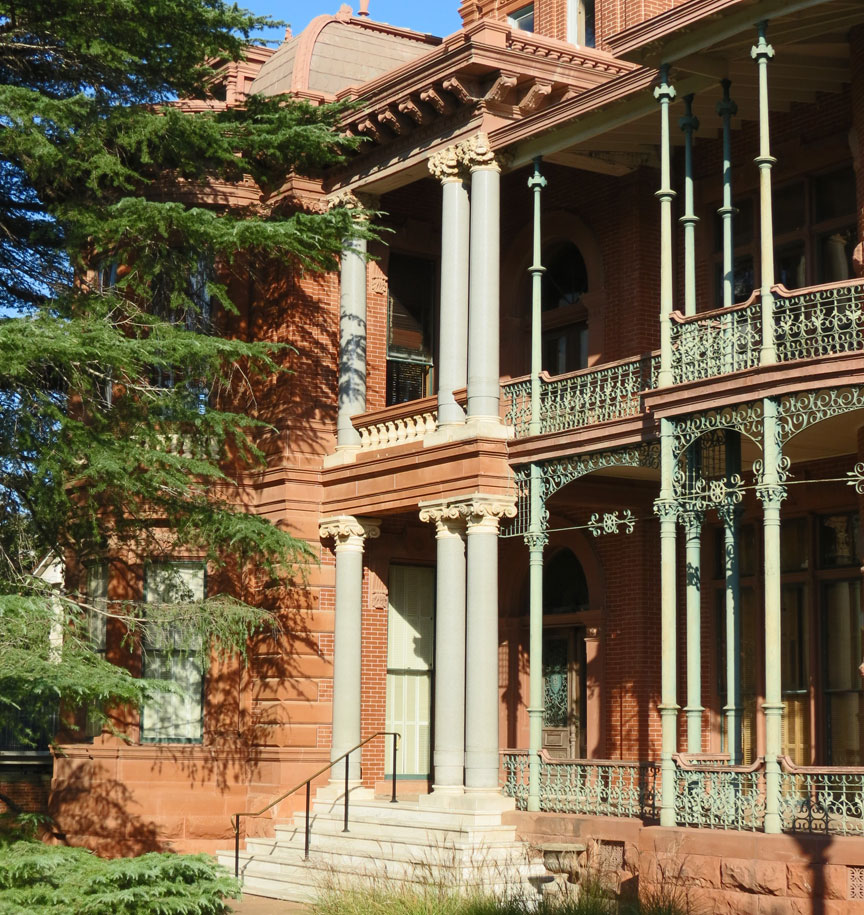
The university operates a public radio station, KUT, which provides local FM
broadcasts as well as live streaming audio over the Internet. The university
uses Capital Metro to provide bus transportation for students around the campus
and throughout Austin.
Text from Wikipedia